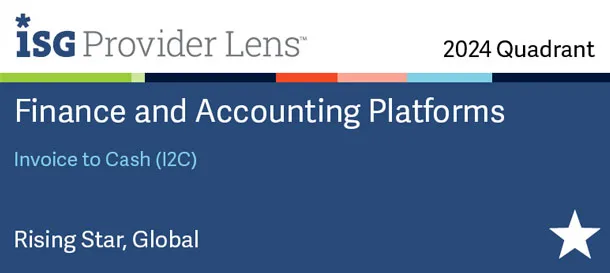Year-to-Date (YTD) is a key financial term that tracks business performance from the beginning of the year up to the current date. CFOs and finance teams rely on YTD reporting to measure revenue, expenses, and overall company performance. Understanding YTD reporting is essential for effective budgeting, forecasting, and decision-making in 2026.
What is Year-to-Date (YTD)?
Year-to-Date (YTD) represents the total value of financial metrics accumulated from the start of the year until a specified date. It helps organizations monitor trends, compare performance with previous years, and evaluate progress against targets.
YTD Meaning and Definition
YTD stands for “Year-to-Date.” It refers to the cumulative financial results measured from the beginning of the fiscal or calendar year to the current date.
Importance of YTD Reporting for CFOs
CFOs use YTD data to gain insights into cash flow, revenue trends, and expense management. Real-time YTD reporting allows strategic decisions, timely interventions, and better financial planning.
YTD in Accounting and Finance
In accounting, YTD is crucial for auditing, regulatory compliance, and financial analysis. It provides a comprehensive view of company performance over a defined period.
Fiscal Year-to-Date vs Calendar Year-to-Date
Fiscal YTD aligns with the organization’s financial year, while Calendar YTD follows the standard January–December reporting period. The choice depends on company policies and reporting standards.
Common YTD Metrics
- Revenue Year-to-Date
- Expenses Year-to-Date
- Profit or Loss YTD
- Cash Flow YTD
- Payroll and Employee Earnings YTD
How to Calculate Year-to-Date (YTD)
Calculating YTD involves summing all transactions from the beginning of the year up to the reporting date. Accuracy is critical for budgeting, forecasting, and financial decision-making.
YTD Formula
The basic formula for YTD calculation is:
YTD Value = Sum of all relevant transactions from January 1 (or fiscal year start) to the current date
YTD Examples in Real Business Scenarios
Example 1: A company tracks revenue from January 1 to October 15 to measure progress against the annual target.
Example 2: A CFO monitors cumulative payroll expenses YTD to ensure compliance with budgeted labor costs.
YTD vs Month-to-Date (MTD) Reporting
Month-to-Date (MTD) covers transactions from the start of the current month to the reporting date, while YTD includes all months since the beginning of the year. Both are crucial for performance analysis.
Key Differences
- YTD covers the entire year to date; MTD covers only the current month.
- YTD helps track long-term trends; MTD tracks short-term performance.
- YTD is commonly used in CFO dashboards for cumulative analysis.
Using YTD Reports for Financial Performance Tracking
CFOs use YTD reports to monitor revenue growth, control expenses, and optimize working capital. Integration with dashboards allows real-time decision-making.
YTD in Revenue Analysis
Tracking revenue YTD helps organizations assess sales performance, identify slow months, and forecast annual revenue more accurately.
YTD in Expense Monitoring
Expense tracking YTD enables organizations to compare actual spending against budget and identify areas for cost optimization.
YTD in Payroll Management
Tracking employee earnings YTD ensures compliance with tax laws and payroll budgets while providing transparency for HR and finance teams.
How Investors and Analysts Use YTD Data
YTD metrics are also valuable for investors and analysts. They provide insights into company growth, profitability, and financial stability over a period.
YTD in Portfolio Performance Tracking
Investors use YTD data to measure the returns of stocks, mutual funds, or portfolios from the start of the year to assess performance.
YTD in Comparative Analysis
Comparing YTD data across companies or industry benchmarks helps analysts evaluate relative performance and identify trends.
YTD Reporting Best Practices
Effective YTD reporting requires standardized accounting methods, timely data entry, and automated analytics tools for accuracy and transparency.
Integrating YTD Analytics in BI Dashboards
Modern BI dashboards allow CFOs to visualize YTD revenue, expenses, and profits, enhancing decision-making efficiency.
Automating YTD Reporting with AI Tools
AI-driven finance tools can automate YTD calculations, provide real-time insights, and detect anomalies for faster corrective actions.
Advanced YTD Examples for CFOs
CFOs require detailed YTD reporting to optimize finance operations. Here are some advanced examples of YTD usage in business:
Revenue Forecasting Using YTD
YTD revenue trends help forecast future earnings. By comparing YTD figures with historical data, CFOs can predict monthly or quarterly performance and plan strategies accordingly.
Expense Management and Cost Control
Tracking cumulative expenses YTD enables CFOs to identify overspending areas, implement cost-cutting measures, and maintain budget adherence throughout the year.
Cash Flow Analysis with YTD Data
Monitoring cash inflows and outflows YTD ensures liquidity management. CFOs can detect cash shortages early and plan financing or investment activities efficiently.
YTD in Strategic Decision-Making
YTD metrics provide actionable insights for strategic planning, investment decisions, and performance optimization.
Budget Allocation and Adjustments
Using YTD data, CFOs can adjust budgets dynamically, allocating funds to high-performing departments and reducing allocations in underperforming areas.
Performance Benchmarking
Comparing YTD metrics across periods, departments, or competitors allows finance leaders to benchmark performance and identify operational improvements.
Financial Risk Assessment
Analyzing YTD trends helps assess financial risks, detect anomalies, and ensure compliance with accounting standards and regulations.
AI and Technology in YTD Reporting
Modern CFOs leverage AI-driven tools to automate YTD reporting, enhance accuracy, and generate predictive insights.
AI-Generated YTD Insights
AI algorithms analyze large datasets to provide real-time YTD reports, detect trends, and highlight anomalies for timely interventions.
Integration with ERP and BI Systems
Integrating YTD data with ERP systems and BI dashboards enables comprehensive financial visualization, supporting informed decision-making and strategy formulation.
Predictive Analytics for CFOs
Predictive YTD models forecast revenue, expenses, and cash flow, helping CFOs optimize working capital and improve financial planning.
Real-Time YTD Analytics for 2026
Real-time YTD reporting ensures that CFOs have access to up-to-date financial metrics, facilitating proactive decisions and reducing manual intervention.
Benefits of Real-Time YTD Tracking
- Improved accuracy and transparency
- Faster financial decision-making
- Early detection of discrepancies and anomalies
- Enhanced forecasting and planning
- Optimized cash flow management
Implementing Smart Dashboards
Smart dashboards consolidate YTD metrics, KPIs, and analytics in one view, allowing CFOs to quickly interpret data and take actionable steps.
Automating YTD Reports
Automation reduces human error, saves time, and ensures that YTD reports are consistently updated and accurate. AI-powered tools can handle data aggregation, visualization, and predictive calculations.
How Emagia Helps CFOs Maximize YTD Reporting Efficiency
Emagia provides advanced financial automation solutions that enhance YTD reporting, deliver real-time insights, and support data-driven decision-making. CFOs can benefit from:
- Automated YTD calculations across all financial metrics
- Integration with ERP and accounting systems
- AI-driven predictive insights for revenue, expenses, and cash flow
- Custom dashboards tailored to organizational needs
- Enhanced reporting accuracy and compliance with regulatory standards
- Real-time monitoring of financial KPIs and performance metrics
Conclusion
Year-to-Date (YTD) reporting is a critical tool for CFOs and finance teams in 2026. It enables effective financial analysis, performance monitoring, and strategic decision-making. Leveraging AI, automation, and real-time analytics enhances YTD insights, optimizes cash flow, and improves overall financial management. By integrating YTD data with modern tools, CFOs can drive better results, ensure compliance, and stay ahead in a competitive business environment.
Frequently Asked Questions (FAQs)
What does YTD mean in accounting?
YTD, or Year-to-Date, represents cumulative financial data from the beginning of the year to the current date, used to track performance and trends.
How do you calculate Year-to-Date revenue?
Sum all revenue transactions from the start of the fiscal or calendar year up to the reporting date to calculate YTD revenue.
What is the difference between YTD and MTD?
YTD covers the entire year to date, while Month-to-Date (MTD) includes only the current month’s data. Both are used for performance tracking.
Why is YTD reporting important for CFOs?
YTD reporting helps CFOs monitor performance, make strategic decisions, optimize cash flow, and manage budgets effectively.
Can AI help with YTD reporting?
Yes, AI tools can automate YTD calculations, provide predictive analytics, and generate real-time dashboards for better financial insights.
What metrics are commonly tracked in YTD reports?
Common metrics include revenue YTD, expenses YTD, profit or loss YTD, cash flow YTD, and payroll YTD.
How does YTD help with budgeting?
YTD data allows CFOs to adjust budgets dynamically based on cumulative performance and trends observed throughout the year.



